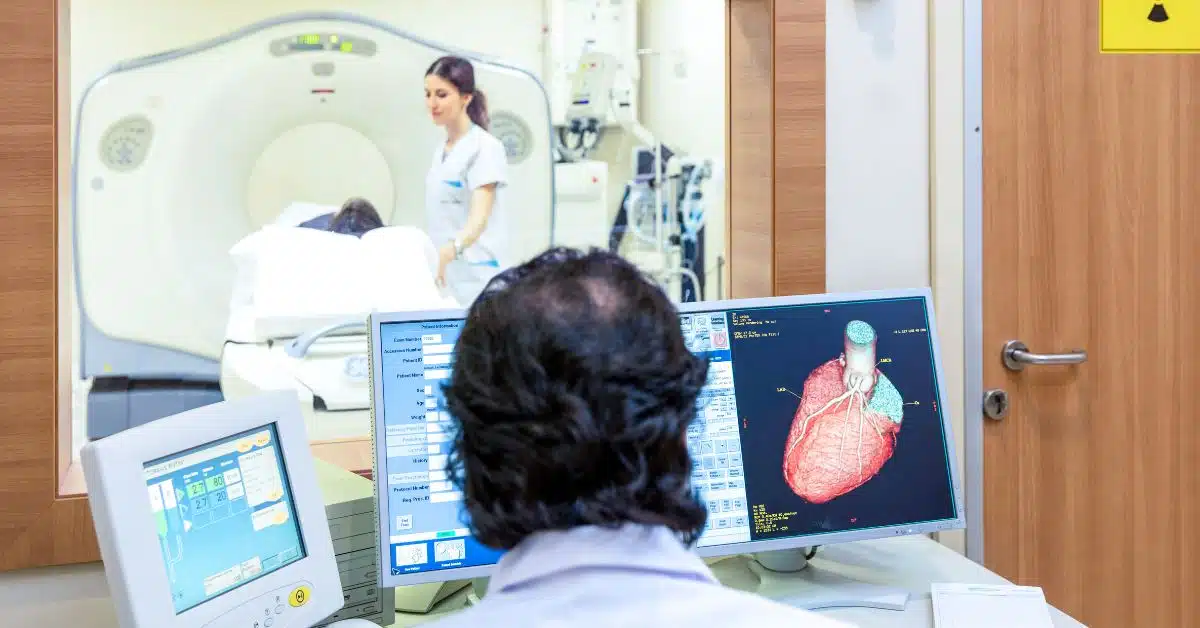
American Heart Month is a time to raise awareness about the importance of heart health and the ways to prevent and treat heart disease. February was traditionally designated as Heart Month in 1963 by President B. Johnson, with Valentine’s Day serving as a reminder of the importance of loving and taking care of our hearts.1
Cardiac health is a major concern, as heart disease is the leading cause of death worldwide. While there are many factors that contribute to heart disease, such as genetics and lifestyle choices, early detection and treatment can greatly reduce the risk of heart attack and stroke.2
Radiology plays a crucial role in the diagnosis and treatment of heart disease. Imaging tests like echocardiograms, CT scans, and MRIs can provide detailed pictures of the heart and its blood vessels, allowing doctors to identify and diagnose problems early on.3 These imaging tests can also be used to monitor the progress of treatment and track any changes in the heart over time.
One of the most important imaging tests used in cardiac health is the coronary angiogram.4 This test uses X-rays and a contrast dye to create detailed images of the coronary arteries and detect any blockages. This test can help doctors identify the location and extent of blockages and decide on the best course of treatment, whether it be medication, angioplasty, or surgery.
In addition to diagnostic imaging, radiology also plays a role in the treatment of heart disease. Interventional radiology procedures, such as angioplasty and stenting, can help open blocked coronary arteries and improve blood flow to the heart. These procedures are less invasive than traditional surgery and have a faster recovery time.5
Heart month is a time to raise awareness about heart health, the importance of early detection and treatment, and the role of radiology in maintaining a healthy heart. Radiologists can get involved by educating patients and healthcare providers about the importance of imaging in detecting and managing cardiac conditions, promoting the early detection and prevention of heart disease, and participating in community events and screenings.
Additionally, radiologists can get involved in Heart Month by continuing to further their own education and staying up-to-date on the latest imaging techniques and advancements in cardiac care. Here are 3 ways that radiologists can boost their knowledge in cardiac imaging:
———–